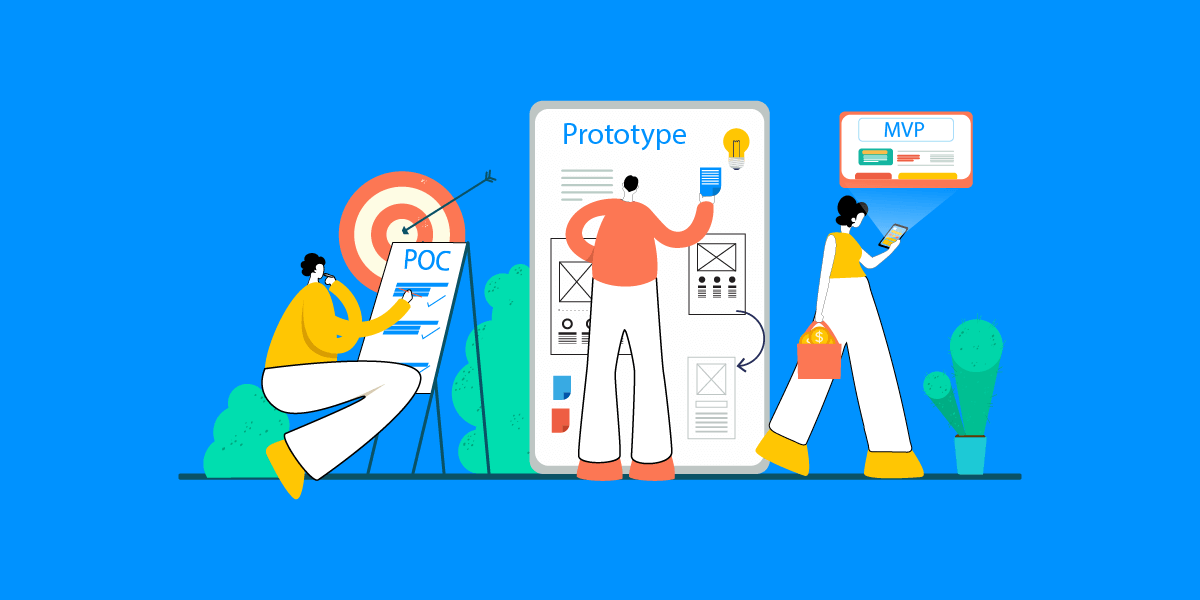Prototyping: Essential Steps to MVP Success from IGF
September 18, 2024
Living in a world where startups rise and fall in the blink of an eye, innovation isn’t an advantage but a necessity. Meet the Minimum Viable Product: the greatest game-changer for an ambitious entrepreneur ready to turn vision into reality. Earlier, we’ve already talked about MVP here. This powerful strategy not only minimizes risks but also empowers a startup to validate its concepts in no time. By embracing the MVP model, entrepreneurs get hold of main insights that help them iterate and adjust their products for better success in a highly competitive environment. In this article, we’ll take a closer look at prototyping and its importance.
Understanding the Essence of an MVP
MVP is much more than an early version of the product; it is an experimental tool in itself. This early version holds essential features required to serve particular customers’ needs. It is functionality-oriented, and user experience-oriented and allows a startup to engage with prospective customers for constructive feedback. A startup does not invest considerable time and resources in developing features that might not appeal to users by testing a simplified version of their product.
The MVP approach helps startups learn directly from their target audience. This way, the entrepreneurs would be able to keep a check on whether the product is capable enough to meet all the demands of the customers and minimize their risk of developing those features that do not require any demand in the market. The MVP method will keep the startups glued to the core value proposition and help them solve real-life problems.
The Benefits of Prototyping Through MVPs
- Identification of Market Need: Prototyping helps startups uncover unique customer requirements that may not be apparent during the initial ideation phase. By putting their product in front of users, entrepreneurs can gain insights into what customers truly value, guiding their product development in the right direction.
- Hypothesis Testing: Most startups operate based on hypotheses as to what the customer wants or would like. An MVP enables these kinds of assumptions to be tested in the fastest and most effective way. By analyzing how users interact with the product and from any feedback, a startup will learn what keeps users coming back for more and what does or may need to be reconsidered or removed.
- Facilitating Iteration: The iterative nature of the MVP process encourages continuous improvement. As startups gather feedback from early users, they can refine their products based on real-world insights. This ongoing cycle of testing and enhancement ensures that the final product aligns closely with customer expectations.
- Minimizing Financial Risks: Creating a fully featured product is an expensive activity. The use of the MVP approach reduces financial risk since startups are allowed to test ideas before exposing themselves to more tasks that require higher financial expenditure. Early validation enables the startups to shorten their strategy based on the feedback they receive from their users, leading to smarter investments.
Steps to Successful MVP Development
The road to creating a successful MVP involves a step-by-step process:
- Identify Customer Pain Points: Understand what problems or struggles your target audience is facing. Use that understanding as a guide for the foundation of your MVP. We have already talked about customer pain points in our blog post.
- Define the Core Value Proposition: Clearly articulate the primary feature that addresses the identified problem. This core element will be the driving force behind your MVP.
- Prioritize Essential Features: Focus on features that provide value for a customer in the form of solving a part of their problem. It is very easy to get seduced by some nice-to-have components, but keep it simple.
- Design and Build the MVP: Create something tangibly representative of your product. It may be a software prototype, but it can be just a very simple landing page outlining an idea.
- Go Live and Test, Gather Feedback: Once your MVP is live, ask for early adopter feedback. Analyze the early user experience to find out what works and what doesn’t.
- Refine and Iterate: Take learnings from feedback provided by users and make changes to improve your product. This might include tweaks, new features, or even the reimagining of parts of your MVP.
- Measure Success: KPIs will provide key performance indicators for your MVP. Use these metrics to drive future development efforts.
Conclusion
The MVP model is a prototyping strategy and one of the most effective ways to convert an idea into a product for startups. Early-stage testing and feedback from users help entrepreneurs polish their products, reducing risks and increasing success factors. At IGF, we come into play during this crucial phase, supporting startups with ample resources to shape their innovative ideas into market-ready solutions. Unlock the full potential of your startup journey at IGF with the power of prototyping.


View more articles
Browse our collection of articles below and embark on a journey of discovery.